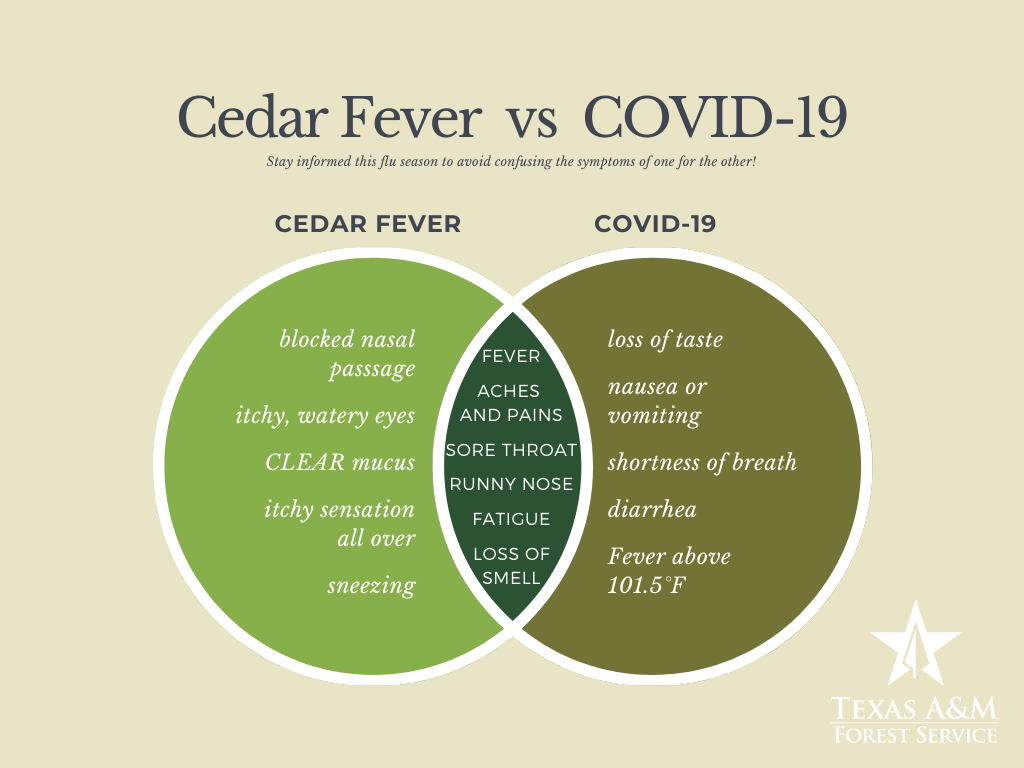While winter season is typically a calming time for those who suffer from pollen allergies, the opposite is true for allergy sufferers in the southwestern U.S. region.
In Central Texas, Oklahoma, Missouri, Arizona and New Mexico, the Ashe Juniper tree (or mountain cedar) releases its pollen between December and February – leading to “cedar fever” symptoms including sneezing, itchy and watery eyes, congestion and runny nose.
These allergy symptoms begin very suddenly and intensely, and can be accompanied by flu-like symptoms including a sore throat, fatigue, aches and pains. While inflammation of the immune system caused by cedar fever can slightly elevate your body temperature, it will rarely surpass 101 degrees Fahrenheit. If your fever exceeds that temperature, cedar pollen isn’t likely the cause.

Which symptoms are purely caused by cedar pollen allergies and which ones are linked to COVID-19? This diagram published by the Texas A&M Forest Service shows which symptoms overlap and differ.
In some cases, the pollen from Ashe Juniper trees are so concentrated that even those who are not generally susceptible to allergies can still be affected.
Here are a few tips to manage your symptoms:
- Check pollen count forecasts in your area, and keep windows and doors closed on high pollen count days.
- Limit your time outdoors and change clothes after being outside, followed by a bath or shower before bed to wash pollen off skin and hair.
- Change your air conditioning filter every 3 months. Choose a high-efficiency particulate air (HEPA) filter to filter out smaller particles.
- Use natural remedies like a Neti pot or saline rinse once a day.
- If you prefer drug-free alternatives, consider using the ClearUP® Sinus Pain Relief device, an FDA-approved and clinically proven solution. ClearUP is a small handheld alternative for allergy-related sinus pain and one treatment takes only 5 minutes.
- Removing cedar trees from your property is not recommended primarily because the pollen is airborne and they are often released in cold, dry, windy conditions and blow for miles.
Other Resources:
Cedar Pollen Explodes to Second-Highest Level On Record (KXAN-NBC Austin)
Cedar Fever – What Is It, and How Can You Cope? (Tivic Health Blog)
Cedar Fever – Explained (Texas A&M Forest Service)

